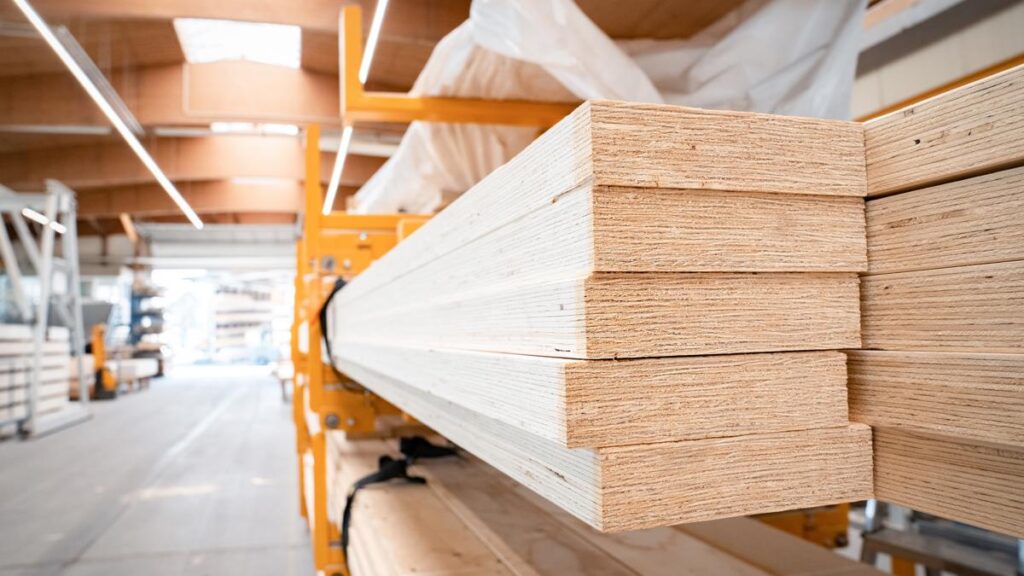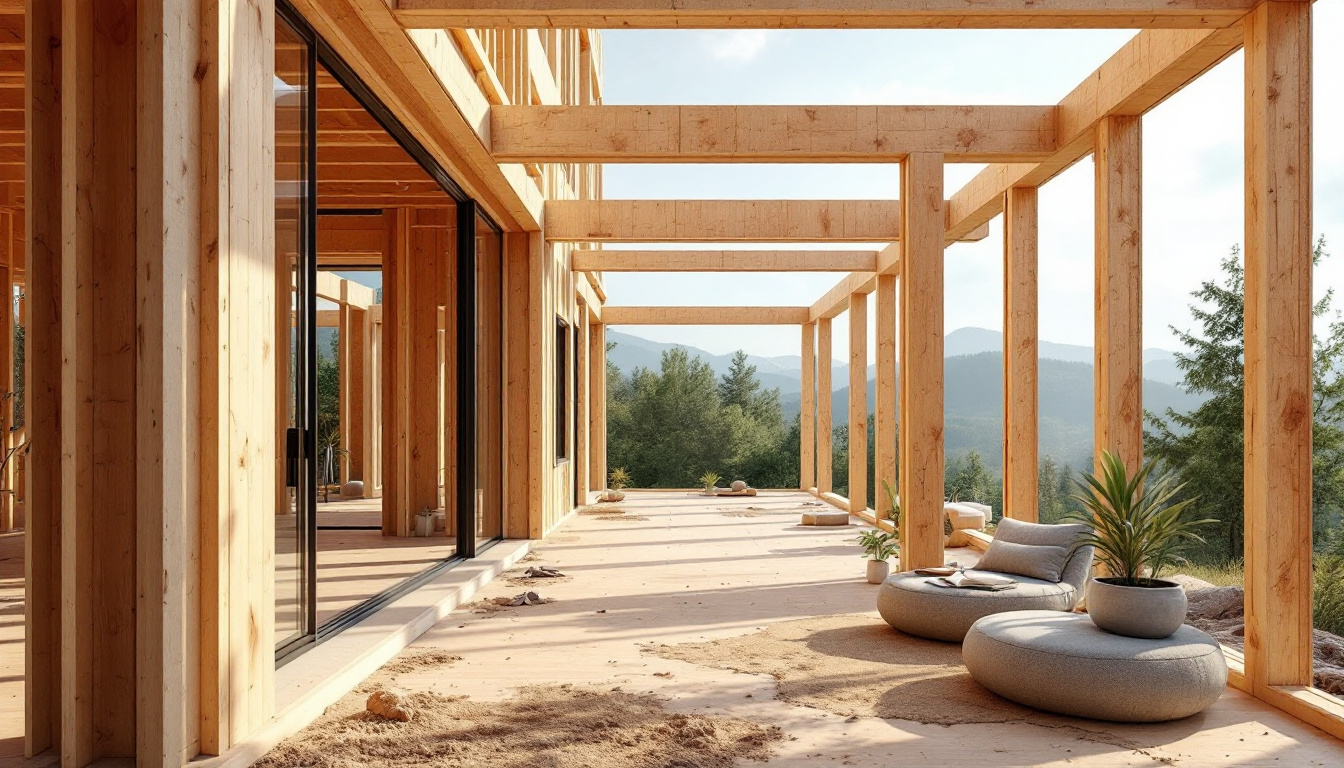When embarking on a construction project, selecting the appropriate materials is crucial for ensuring structural integrity and overall success. One of the key components in many builds is formwork, and laminated veneer lumber (LVL) has emerged as a popular choice. This article will guide you through the essential considerations when choosing LVL timber formwork, ensuring your project meets both safety and aesthetic standards.
Understanding LVL Timber
Laminated veneer lumber (LVL) is an engineered wood product made by bonding together thin layers of wood veneers with adhesives. This process creates a strong and stable material that is ideal for a variety of construction applications, including lvl timber formwork. Understanding the properties of LVL is essential to making an informed choice.
Strength and Durability
One of the standout features of LVL timber is its impressive strength-to-weight ratio. Due to the manufacturing process, LVL is less prone to warping, twisting, or splitting compared to traditional timber. This durability makes it an excellent choice for formwork, as it can withstand the pressures of concrete pouring and the weight of construction loads.
Additionally, LVL is designed to resist moisture, making it suitable for both indoor and outdoor applications. This resilience ensures that the formwork remains intact throughout the construction process, reducing the likelihood of costly delays or structural failures. The consistent quality of LVL also means that builders can rely on its performance, leading to more predictable outcomes in project timelines and structural integrity.
Moreover, LVL can be manufactured in various thicknesses and lengths, allowing for flexibility in design and application. This adaptability makes it an invaluable resource for architects and engineers who are looking to push the boundaries of conventional construction methods. With the ability to create custom solutions tailored to specific project requirements, LVL timber is increasingly becoming a preferred choice in modern building practices.

Cost-Effectiveness
While the initial investment in LVL timber may be higher than that of conventional timber, its long-term benefits often outweigh the costs. The durability and strength of LVL mean that it can be reused multiple times, providing significant savings over the life of a project. Furthermore, the reduced need for maintenance and repairs contributes to its cost-effectiveness.
When budgeting for a construction project, it is essential to consider the total cost of ownership rather than just the upfront price. Investing in high-quality LVL formwork can lead to fewer complications and expenses down the line. Additionally, the efficiency of LVL in construction can lead to shorter project timelines, which can further reduce labour costs and improve overall profitability.
In many cases, the use of LVL can also enhance the sustainability of a project. As an engineered product, LVL is often made from fast-growing, renewable timber species, which can help reduce the environmental impact of construction. This aspect not only appeals to eco-conscious builders but also aligns with the increasing demand for sustainable building practices in the industry. By choosing LVL, contractors can contribute to a greener future while still achieving the high performance required for modern construction challenges.
Learn more at: Timber LVL Formwork Prices in 2025 What to Expect
Assessing Project Requirements
Before selecting LVL timber formwork, it is vital to assess the specific requirements of your project. Different builds will have varying needs based on factors such as size, design, and environmental conditions.
Load-Bearing Capacity
Understanding the load-bearing requirements of your project is crucial when selecting LVL timber formwork. The formwork must be able to support not only the weight of the concrete but also any additional loads that may occur during construction. This includes workers, equipment, and other materials.
Consulting with a structural engineer can provide valuable insights into the load requirements and help determine the appropriate thickness and configuration of LVL timber needed for your specific application. Read more about thickness at https://meded.hms.harvard.edu/admissions-technical-standards
Design Considerations
The design of the formwork will also play a significant role in the selection process. LVL timber can be easily cut and shaped to fit various forms and designs, making it a versatile option for complex architectural features. Whether constructing curved walls or intricate shapes, LVL can accommodate a range of design specifications.
Moreover, the aesthetic finish of LVL timber can enhance the overall appearance of the build. Its smooth surface and clean lines can contribute to a polished look, which is particularly important for visible formwork that will be part of the final structure.
Environmental Considerations
In today’s construction landscape, environmental sustainability is more important than ever. Choosing materials that are eco-friendly can not only reduce the carbon footprint of a project but also appeal to environmentally conscious clients.
Sourcing Sustainable LVL
When selecting LVL timber, it is crucial to source products that are certified by reputable environmental standards, such as the Forest Stewardship Council (FSC). This certification ensures that the wood has been harvested sustainably, promoting responsible forestry practices.
Additionally, consider the lifecycle of the material. LVL timber is often made from fast-growing tree species, which can be replenished more quickly than traditional hardwoods. This means that using LVL can contribute to a more sustainable building practice.
Minimising Waste
Another environmental consideration is minimising waste during the construction process. LVL timber can be prefabricated to specific dimensions, reducing the amount of off-cut material generated on-site. This not only lowers waste disposal costs but also aligns with sustainable building practices. Click here to find more about dimensions.
Implementing efficient planning and logistics can further enhance the sustainability of your project. By carefully calculating the amount of LVL needed, builders can ensure that they order just enough material, reducing excess and promoting a more eco-friendly approach.
Installation and Handling
Proper installation and handling of LVL timber formwork are critical to ensuring its effectiveness and longevity. Understanding the best practices for working with this material can prevent issues during construction.
Training and Safety
Before beginning the installation process, it is essential to ensure that all workers are adequately trained in handling LVL timber. This includes understanding its properties, how to cut and shape it safely, and the correct methods for assembling formwork.
Safety should always be a priority on construction sites. Proper personal protective equipment (PPE) should be worn, and safety protocols should be in place to prevent accidents during the handling and installation of LVL timber formwork.
Assembly Techniques
When assembling LVL formwork, it is important to follow best practices to ensure stability and effectiveness. This includes using the correct fasteners and supports to secure the formwork in place. Additionally, ensuring that the formwork is level and properly aligned will contribute to the overall quality of the finished structure.
Regular inspections during the installation process can help identify any potential issues early on, allowing for timely adjustments and ensuring that the formwork remains structurally sound throughout the concrete pouring process.
Choosing the Right Supplier
Finally, selecting a reliable supplier for LVL timber is a crucial step in the process. The quality of the material can significantly impact the success of your project, so it is essential to choose a supplier with a proven track record.
Reputation and Experience
Researching potential suppliers is a vital step in the selection process. Look for companies with a strong reputation in the industry and experience in providing LVL timber for construction projects. Customer reviews and testimonials can provide valuable insights into the quality of their products and services.
Furthermore, consider suppliers who offer additional support, such as technical advice and assistance with material selection. A knowledgeable supplier can help guide you through the process and ensure that you choose the right LVL timber for your specific needs.
Quality Assurance
Always inquire about the quality assurance processes in place at the supplier’s facility. This includes checking for certifications and standards that the LVL timber meets, ensuring that it is suitable for construction use. A reliable supplier will be transparent about their quality control measures and provide documentation to support their claims.
Conclusion
Choosing the right LVL timber formwork is a critical decision that can significantly impact the success of a construction project. By understanding the properties of LVL, assessing project requirements, considering environmental factors, and ensuring proper installation, builders can create a robust and efficient formwork solution. Additionally, selecting a reputable supplier will further enhance the quality and reliability of the materials used.

Ultimately, investing time and effort into the selection process will pay off, leading to a successful build that meets both structural and aesthetic goals. With the right LVL timber formwork in place, construction projects can proceed smoothly, ensuring safety and satisfaction for all stakeholders involved.
